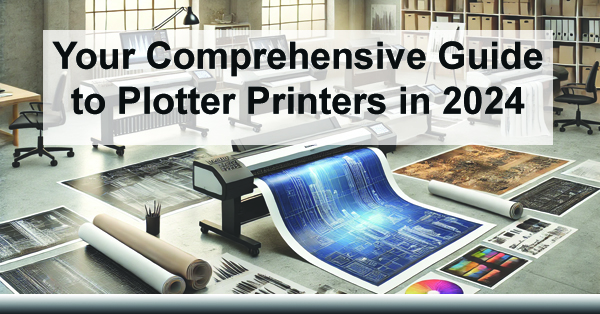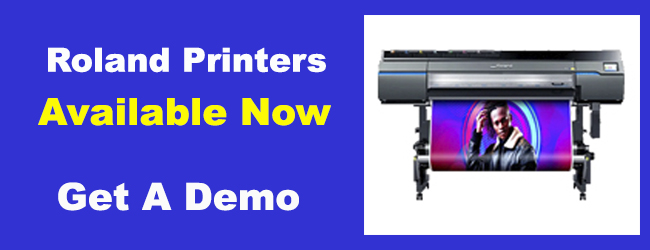
Your 2024 Plotter Printer Guide: Techniques, Substrates & Top Models
Wide-format and plotter printers have carved out a niche in industries that demand precision, scalability, and media flexibility. Whether you’re an architect, engineer, graphic designer, or Colorado business in signage or manufacturing, choosing the right plotter in 2024 can make or break your workflow.
In this guide, we break down the different plotter printer techniques, media compatibility, top models from HP, Canon, Roland, and others — plus how they stack up across real-world applications.
What Is a Plotter Printer?
Plotter printers (or “plotters”) are high-precision, large-format devices that print vector-based graphics by drawing continuous lines rather than tiny dots. That makes them ideal for technical illustrations, CAD drawings, posters, signage, textile work, and more.
Plotter Printing Techniques Explained
- Pen Plotters: Use mechanical pens to draw line work. Mostly obsolete, but still used in ultra-precise blueprint work.
- Cutting Plotters: Equipped with blades to cut vinyl and other media. Common in signage and apparel.
- Inkjet Plotters: Like traditional printers, but wider and more precise. Ideal for color-rich graphics and plans.
- Electrostatic Plotters: Use electric charge to apply toner. High speed, good for blueprint volume runs.
Plotter vs Printer: Key Differences
- Purpose: Plotters are built for wide-format technical or graphic output. Printers are optimized for general document printing.
- Line Precision: Plotters draw continuous vector lines. Printers use dots — fine for photos, but less so for blueprints.
- Media Range: Plotters handle vinyl, canvas, textiles, and heavy paper stock — not just standard sheets.
Compatible Media for Plotter Printers
- Paper: Wide-format CAD, bond, or poster paper.
- Vinyl: Great for vehicle wraps, wall decals, and signage (especially with cutting plotters).
- Canvas: For high-end art prints or exhibition graphics.
- Mylar: Durable, moisture-resistant material for engineering maps and archival plans.
- Textile/Fabric: Used in banner production and branded soft goods.
Best Plotter Printers for Different Business Needs
🧱 For Blueprints & CAD
- HP DesignJet T-series: Reliable and fast for architectural line drawings.
- Canon TX-series: Top-tier speed and ink durability for CAD workflows.
🎨 For Graphic Design
- Epson SureColor P-series: Wide color gamut, ideal for photography and design firms.
- Canon PRO-series: Exceptional tonal gradation, especially for marketing and visual displays.
🌈 For Vibrant Color Output
- HP DesignJet Z-series: Rich color profiles for galleries, posters, and photo prints.
- Roland VersaEXPRESS RF-640: A workhorse for banners, backlit displays, and retail signage.
What Plotter Size Do You Need?
- 24-inch: Posters, signage, and smaller technical drawings
- 36-inch: Common for CAD, engineering, and GIS
- 44-inch: Ideal for maps, blueprints, and higher-volume graphic design
- 60-inch: Great for banners, billboards, and full storefront signage
Roland Plotters vs HP, Canon & Epson
Roland Plotters
- Roland TrueVIS VG2-540 – Great color, user-friendly UI, works with multiple substrates.
- Roland CAMM-1 GR2-540 – High-precision vinyl cutting; ideal for signage shops.
Competitor Strengths
- HP: Best for hybrid CAD and design workflows; known for speed and security.
- Canon: Precision printing with top-tier color consistency. Great for photographers and engineers.
- Epson: Standout in the creative space for professional graphics and rich tonal depth.
Related Plotter Resources from ABT:
Ready to Find the Right Plotter for Your Colorado Business?
Choosing the right wide-format or plotter printer depends on your output size, design complexity, substrate needs, and volume. ABT specializes in helping local Colorado businesses match the right technology with real-world business goals.
Not sure where to start? Book a free demo of Roland, HP, or Canon plotters — or contact us for personalized help.
